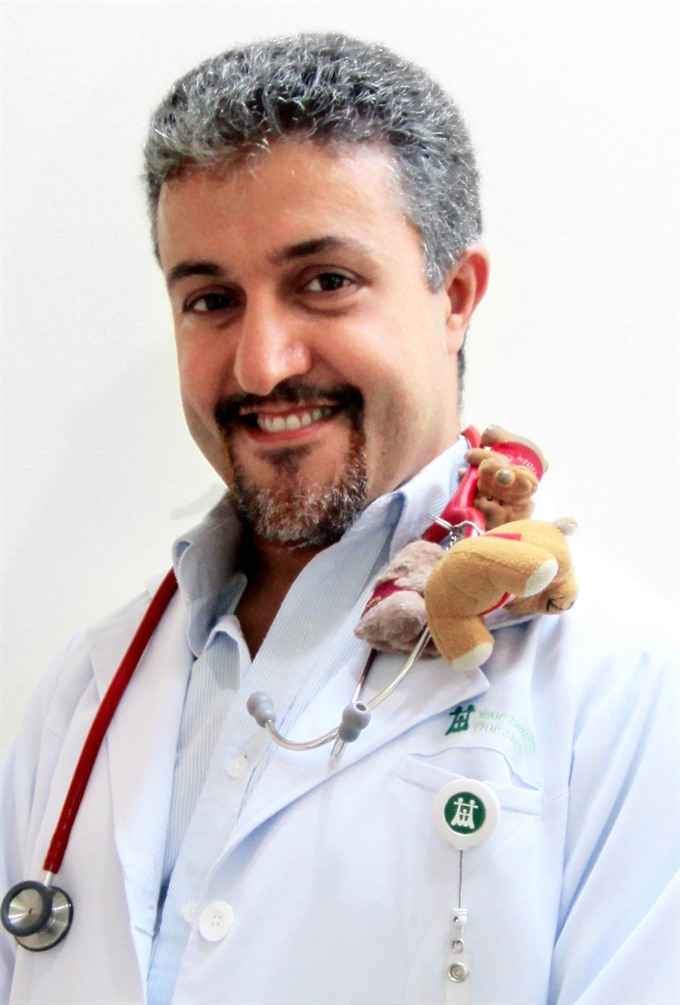 |
| Dr Jonathan Halevy — Photo courtesy of Family Medical Practice Vietnam |
Viet Nam News By Dr Jonathan Halevy*
When you walk into a pharmacy in any country in the world, you will notice that the majority of medications on the walls and shelves are cough medications. Cough medicine is a multi-billion dollar industry.
There are so many different types of medications for cough, with different purposes. It can be quite confusing to choose the "right one" for you. My mentor used to say that when you have so many medications to treat one symptom, it means none of them really works....
As a doctor, when I prescribe a medication for my little patients, I always have to consider the benefits of the medication versus its possible side effects. If the potential harm is greater than its benefits then the medication should not be given.
Here is a summary of the different groups of cough medications, their benefits (if any), and potential side effects:
Expectorants
These medications increase the volume of water in mucus (phlegm) and make the mucus loose and easy to cough out. The most common expectorants are:
- Guaifenasin (from the Guaiac tree) - Studies done on Guaifenasin did not show any proven effect. Potential side effects of Guaifenasin are urinary retention (difficulty peeing) and kidney stones.
- Mucolytics - These medications break chemical connections between proteins within mucus. They turn the mucus thinner, less “sticky”, and easier to expel. The most commonly used are “Bisolvon” (Bromhexine), Acetylcysteine (Mucomyst; Azimuc), and Ambroxol (Halixol). Mucolytics have been shown to have some benefit in treating the common cold and bronchitis, and they are relatively safe. Acetylcysteine may cause spasm of airways; so if a child has wheezing or asthma, it’s better to avoid this medication. Ambroxol is an exceptional medication. Besides its mucolytic action, a few studies have shown that it also has: an antiviral effect (reduces the ability of certain viruses to multiply); an anaesthetic effect (reduces pain; Ambroxol is used to treat sore throat); an antioxidant and anti-inflammatory effect (reduces tissue damage from an inflammation); and even reduces injury to lungs after heart surgery. It’s the only cough medication that has been safely studied in little babies. It has even been shown to be effective in reducing chronic lung disease in preterm babies. Recent studies suggest Ambroxol may have a protective effect on brain cells. This year a large study is being conducted in the USA to see if Ambroxol can improve brain function in Parkinson’s disease. Ambroxol is my personal choice of medication to treat cold and flu. It is also my secondary treatment of choice for pneumonia, sinusitis and asthma.
- Decongestants - These medications reduce the production of mucus (phlegm).
Oral decongestants
- Pseudoephedrine - This was the most common decongestant used in cough medication combinations and it was effective. But since it was very easy to turn this chemical into a drug (Methamphetamine), it was removed from the market in most countries.
- Phenylephrine - This replaced Pseudoephedrine as systemic decongestant. Phenylephrine is used to constrict (narrow) blood vessels and to increase blood pressure in conditions such as severe infection or shock. It is supposed to constrict blood vessels in the nose and reduce the release of fluids into the mucus. Many studies did not show any effect when taking this medication by mouth, since it mostly breaks down in the stomach. Phenylephrine has a potential for serious side effects, such as high blood pressure, low heart rate, loss of appetite, restlessness and difficulty falling asleep.
Nasal decongestants
- Steroids – Steroid sprays are very effective in reducing nasal congestion. They are also relatively safe to use, even for several weeks. The medicinal effect builds over a period of several days, so it takes time to get the maximum effect from the spray. The usual use is 7 – 10 days. Nasonex spray is somewhat better, since it can be used once a day and is not absorbed into the blood.
- Oxymetazoline (Otrivin and similar) – This is a very effective spray decongestant and the effect is very quick. But if it is used for more than 3-4 days it can cause worse congestion. Use of this spray must be stopped after 4 days. It should not be used more than once a month.
Antihistamines
There are two types of antihistamine medications: the “old” and “new” generations.
- “Old” generation antihistamines have anti-allergic effects plus many side effects, due to their effect on airway membranes, heart and brain. Side effects such as drying up the nose and mouth, causing drowsiness, sleepiness and irritability, behavioral problems, and increasing heart rate. An overdose of these medications can cause a baby to suffer seizures, become comatose, reduce blood pressure, stop breathing, and even die. Babies under two years old are at higher risk, and these medications are not approved for them. The “old” generation antihistamines are used as cough medications - not because of their anti-allergic effects - but because of their side effects which reduce mucus, dry the membranes, cause drowsiness, and suppress the cough reflex. Studies did not show significant effectiveness in improving “cold” symptoms in babies and little children. More importantly, suppressing a cough and causing the mucus to become thicker can worsen asthma and should be avoided in children who suffer from asthma.
- “New” generation antihistamines don’t have the same side effects of the “old” generation medicines. So they are only useful for coughs caused by allergies (allergic rhinitis). They don’t have any effect on coughs caused by colds, viral or bacterial infections, or asthma.
In summary: Avoid “old” generation antihistamine use by children. Use “new” generation antihistamines ONLY for coughs caused by allergies.— Family Medical Practice Vietnam
----
*Dr Jonathan Halevy is a senior pediatrician at Family Medical Practice in HCM City. He specialises in pediatric emergency medicine and neonatal intensive care.
For more advice on any medical topics, visit Family Medical Practice Hanoi at 298 Kim Mã Street, Ba Đình. Tel: (04) 3843 0748. E: hanoi@vietnammedicalpractice.com.
Family Medical Practice’s downtown Hồ Chí Minh clinics are located at Diamond Plaza, 34 Lê Duẩn, District 1 and at 95 Thảo Điền Street, District 2. Tel: (08) 38227848. E: hcmc@vietnammedicalpractice.com.
 Life & Style
Life & Style

